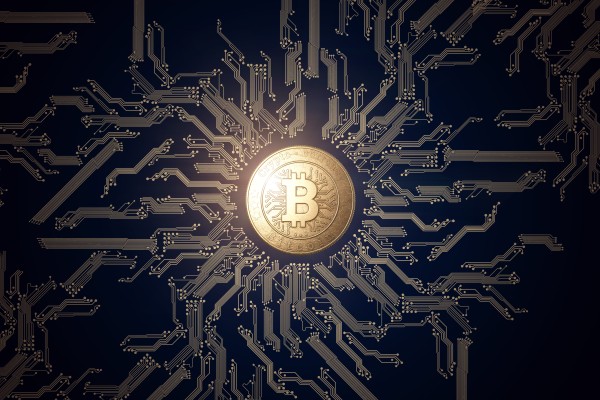-
-
-
-
-
-
6.Conclusion
Disclaimer: This article does not constitute financial advice. Before making any investment decisions, please conduct thorough research and consult with a qualified financial advisor.
Understanding Altcoins:
1.1 What are Altcoins? Exploring the concept and characteristics.
Altcoins, short for 'alternative coins,' refer to any cryptocurrency that is not Bitcoin. They emerged as a response to Bitcoin's dominance in the early days of cryptocurrency. Altcoins aim to address Bitcoin's limitations, introduce innovative features, or serve specific use cases. Like Bitcoin, altcoins utilize blockchain technology for secure and transparent transactions. However, they often have distinct features and underlying protocols that differentiate them from Bitcoin.
Altcoins can be created through various means, including forking existing cryptocurrencies or building new blockchain networks from scratch. They may offer enhanced privacy, faster transaction speeds, smart contract functionality, improved scalability, or specialized features targeting specific industries or applications. Altcoins play a vital role in expanding the cryptocurrency ecosystem, fostering competition, and providing users with a broader range of choices.
1.2 Differentiating between Altcoins and Bitcoin: Key similarities and differences.
While altcoins share similarities with Bitcoin, they also possess unique characteristics. Here are some key differences between altcoins and Bitcoin:
a) Blockchain Technology: Both altcoins and Bitcoin leverage blockchain technology, a decentralized and distributed ledger. However, altcoins may use alternative consensus mechanisms, different encryption algorithms, or distinct validation processes, which impact their performance and security.
b) Features and Functionality: Altcoins often introduce additional features or functionalities that set them apart from Bitcoin. For example, altcoins like Ethereum enable the creation and execution of smart contracts, facilitating the development of decentralized applications (DApps). In contrast, Bitcoin primarily focuses on peer-to-peer transactions as a digital currency.
c) Market Position and Adoption: Bitcoin maintains a dominant position in terms of market capitalization, liquidity, and widespread adoption. Altcoins typically have a smaller market share and varying levels of adoption, with some gaining significant popularity in their respective niches.
1.3 The role of Altcoins in diversifying the cryptocurrency ecosystem.
Altcoins play a crucial role in diversifying the cryptocurrency ecosystem in several ways:
a) Innovation and Experimentation: Altcoins foster innovation by introducing new ideas, concepts, and technologies. They enable developers and entrepreneurs to experiment with different approaches to decentralized systems, blockchain protocols, consensus mechanisms, and applications. This experimentation can lead to breakthroughs and advancements that benefit the entire industry.
b) Specialized Use Cases: Altcoins often target specific use cases or industries, addressing their unique requirements. For example, Ripple (XRP) focuses on facilitating fast and cost-effective international transactions, particularly for financial institutions. Cardano (ADA) emphasizes security and sustainability, aiming to create a platform for building secure and scalable decentralized applications.
c) Market Competition and Consumer Choice: Altcoins provide alternatives to Bitcoin and offer consumers a broader range of choices. Competition among altcoins encourages continuous development, innovation, and improvements in terms of transaction speed, fees, security, scalability, and user experience. This competition can drive the overall growth and maturation of the cryptocurrency ecosystem.

Popular Altcoins and their Unique Features:
Let's explore some popular altcoins and their unique features:
2.1 Ethereum (ETH): Smart contracts and decentralized applications.
Ethereum is a leading altcoin that introduced the concept of smart contracts, self-executing contracts with predefined rules and conditions. It enables developers to build decentralized applications (DApps) on its blockchain, opening up possibilities for various industries, including finance, supply chain, gaming, and more. Ethereum's native cryptocurrency, Ether (ETH), fuels the network and serves as a means of value exchange.
2.2 Ripple (XRP): Enabling fast and low-cost international transactions.
Ripple aims to revolutionize cross-border payments by providing fast and low-cost transactions. It utilizes its unique consensus algorithm, the Ripple Protocol Consensus Algorithm (RPCA), to validate transactions without the need for mining. Ripple's native cryptocurrency, XRP, acts as a bridge currency, facilitating the transfer of value between different fiat currencies quickly and efficiently. Its focus on solving the challenges of traditional international payments has gained traction among financial institutions and remittance services.
2.3 Litecoin (LTC): Improving transaction speed and scalability.
Litecoin, often referred to as the "silver to Bitcoin's gold," was one of the earliest altcoins. It shares many similarities with Bitcoin but offers faster block generation time and transaction confirmation. This feature allows Litecoin to process transactions more quickly and handle a higher volume of transactions. Its Scrypt hashing algorithm also makes it more resistant to specialized mining hardware, promoting broader participation in mining and decentralization.
2.4 Cardano (ADA): Focus on security and sustainability.
Cardano is a blockchain platform that aims to provide a secure and sustainable infrastructure for the development of decentralized applications and smart contracts. It employs a unique layered architecture and a proof-of-stake consensus algorithm called Ouroboros. Cardano's focus on rigorous academic research, formal verification, and scalability sets it apart. Its native cryptocurrency, ADA, is used for staking and participating in the platform's governance.
2.5 Polkadot (DOT): Building a decentralized web of connected blockchains.
Polkadot is a multi-chain platform that enables the interoperability of different blockchains. It aims to create a decentralized web, allowing different networks to communicate and share information securely. Polkadot's innovative technology allows for the seamless transfer of assets and data between different blockchains, facilitating scalability, privacy, and customized governance models. DOT is Polkadot's native cryptocurrency, used for governance and staking.
2.6 Binance Coin (BNB): Utility token within the Binance exchange ecosystem.
Binance Coin is the native cryptocurrency of the Binance exchange, one of the largest cryptocurrency exchanges globally. BNB serves multiple purposes within the Binance ecosystem, including discounted trading fees, participation in token sales, and more. Binance also launched the Binance Smart Chain (BSC), a parallel blockchain network that supports smart contracts and decentralized applications, further expanding the utility of BNB.
2.7 Stellar (XLM): Facilitating cross-border transactions and financial inclusion.
Stellar is an open-source blockchain platform designed for fast and low-cost cross-border transactions. It focuses on facilitating remittances and connecting financial institutions in underserved areas. Stellar's native cryptocurrency, XLM, serves as a bridge currency for seamless value transfer. The platform's mission is to promote financial inclusion and provide affordable access to financial services for individuals and businesses worldwide.
These are just a few examples of popular altcoins with unique features and use cases. The cryptocurrency market is continuously evolving, and new altcoins with innovative ideas are emerging regularly. Understanding their distinct characteristics and applications can help investors and enthusiasts navigate the diverse cryptocurrency ecosystem.
Use Cases and Applications:
3.1 Altcoins for Privacy: Monero (XMR) and Zcash (ZEC) as privacy-focused cryptocurrencies.
Privacy-focused altcoins provide users with enhanced anonymity and transaction privacy. Monero (XMR) and Zcash (ZEC) are two prominent examples:
Monero (XMR): Monero employs advanced cryptographic techniques such as ring signatures and stealth addresses to obfuscate transaction details and hide sender and recipient information. This ensures privacy by default, making it difficult to trace transactions on the Monero blockchain.
Zcash (ZEC): Zcash utilizes zero-knowledge proofs known as zk-SNARKs to enable shielded transactions. This allows users to send transactions with encrypted sender, recipient, and transaction amounts, providing robust privacy options while maintaining the choice of selective transparency.
Privacy-focused altcoins like Monero and Zcash are used by individuals and businesses who prioritize anonymity and confidentiality in their financial transactions.
3.2 Altcoins for Scalability: Solana (SOL) and Algorand (ALGO) addressing scalability challenges.
Scalability is a critical concern for blockchain networks as they strive to handle a growing number of transactions quickly and efficiently. Altcoins like Solana and Algorand focus on addressing scalability challenges:
Solana (SOL): Solana utilizes a unique combination of Proof of History (PoH) and Proof of Stake (PoS) mechanisms to achieve high transaction throughput and low latency. It can process thousands of transactions per second, making it well-suited for applications that require fast and scalable blockchain infrastructure.
Algorand (ALGO): Algorand employs a pure proof-of-stake consensus algorithm that enables secure and fast transactions. Its protocol allows for quick block confirmation times and ensures that the network can scale as the user base expands.
Altcoins that prioritize scalability, such as Solana and Algorand, are often utilized in decentralized applications, high-frequency trading, and projects that require fast transaction processing and high throughput.
3.3 Altcoins for Decentralized Finance (DeFi): Uniswap (UNI) and Chainlink (LINK) in the DeFi ecosystem.
Decentralized Finance (DeFi) aims to revolutionize traditional financial systems by offering permissionless and trustless financial services. Altcoins like Uniswap and Chainlink play key roles in the DeFi ecosystem:
Uniswap (UNI): Uniswap is a decentralized exchange protocol that operates on the Ethereum blockchain. It enables users to trade ERC-20 tokens directly from their wallets without intermediaries. Uniswap employs an automated market-making mechanism, relying on liquidity pools rather than order books.
Chainlink (LINK): Chainlink provides decentralized oracle networks that connect smart contracts with real-world data and external APIs. It ensures the security and reliability of off-chain data by aggregating information from multiple sources and delivering it on-chain, enabling smart contracts to interact with real-world events and data.
Altcoins like Uniswap and Chainlink are fundamental building blocks in the DeFi ecosystem, facilitating decentralized trading and enabling the integration of external data into smart contracts.
3.4 Altcoins for NFTs: Flow (FLOW) and Enjin (ENJ) powering the non-fungible token market.
Non-fungible tokens (NFTs) have gained significant attention for their ability to represent ownership and uniqueness in the digital realm. Altcoins like Flow and Enjin are actively involved in the NFT space:
- Flow (FLOW): Flow is a blockchain designed specifically for NFTs and decentralized applications. It provides a scalable infrastructure that supports the creation, trading, and interaction of NFTs, making it easier for developers and users to participate in the NFT market.
- Enjin (ENJ): Enjin is an altcoin that focuses on creating an ecosystem for the development and management of NFTs. It provides tools and infrastructure for game developers, allowing them to integrate blockchain-based assets and NFTs into their games. Enjin also enables users to create, trade, and own unique virtual items and assets within gaming environments.
Altcoins like Flow and Enjin are driving innovation in the NFT market, providing the necessary infrastructure and tools for creators, collectors, and developers to engage in the growing world of digital collectibles, art, and virtual assets.
3.5 Altcoins for Social Impact: Digibyte (DGB) and Basic Attention Token (BAT) supporting social causes.
Certain altcoins aim to make a positive social impact by addressing specific challenges or supporting social causes. Two notable examples are Digibyte and Basic Attention Token (BAT):
Digibyte (DGB): Digibyte focuses on enhancing cybersecurity and promoting decentralized systems. It aims to provide secure digital transactions, safeguard user data, and improve the efficiency of digital communications. Digibyte's commitment to security and decentralization makes it valuable for applications where data integrity and privacy are paramount.
Basic Attention Token (BAT): Basic Attention Token is designed to improve the digital advertising industry by addressing issues such as privacy, fraud, and user engagement. BAT operates within the Brave browser ecosystem, where users can earn BAT for viewing privacy-respecting ads and publishers can receive BAT as compensation. BAT aims to create a fairer and more efficient digital advertising ecosystem.
Altcoins like Digibyte and Basic Attention Token showcase how blockchain technology can be harnessed to bring positive changes to society, whether through cybersecurity advancements or disrupting traditional advertising models.
These altcoins demonstrate the diverse applications and use cases within the cryptocurrency ecosystem. As the industry continues to evolve, more altcoins are likely to emerge, each targeting specific challenges and driving innovation in their respective fields.
Investing in Altcoins:
4.1 Evaluating Altcoin Projects: Factors to consider before investing.
When considering investing in altcoins, it's crucial to evaluate the projects and understand their potential for success. Here are some factors to consider:
Team and Development: Assess the team's expertise, experience, and track record. Look for transparency in project updates and ongoing development activities.
Use Case and Market Fit: Understand the altcoin's purpose, its target market, and the problem it aims to solve. Evaluate whether there is a genuine need for the altcoin's technology or services.
Technology and Innovation: Examine the altcoin's underlying technology, consensus mechanism, scalability, security features, and potential for adoption and integration with existing systems.
Community and Adoption: Research the altcoin's community engagement, partnerships, and existing user base. Consider the altcoin's popularity and potential for growth.
Roadmap and Future Plans: Analyze the altcoin's roadmap, future plans, and milestones. Look for a clear vision and a realistic strategy for achieving project goals.
4.2 Risks and Challenges of Altcoin Investments: Market volatility, regulatory concerns, and project viability.
Investing in altcoins comes with certain risks and challenges. It's essential to be aware of these factors:
Market Volatility: Altcoins tend to be more volatile than established cryptocurrencies like Bitcoin. Price fluctuations can be significant, which can lead to both high profits and losses.
Regulatory Concerns: Altcoins operate in a regulatory landscape that is still evolving. Changes in regulations, legal restrictions, or government actions can impact the altcoin market and its viability.
Project Viability: Altcoins are associated with the risk of project failure or scams. Conduct thorough research to assess the legitimacy and viability of the project before investing.
Liquidity: Some altcoins may have lower liquidity compared to larger cryptocurrencies, which can result in challenges when buying or selling altcoins.
4.3 Diversifying Crypto Portfolios: Balancing Bitcoin and Altcoins for optimal investment strategies.
Diversification is key to managing risk and optimizing investment strategies in the cryptocurrency market. Consider the following aspects when diversifying your crypto portfolio:
Bitcoin as the Foundation: Bitcoin, being the most established and dominant cryptocurrency, often serves as a core asset in crypto portfolios. It provides stability and liquidity.
Risk Tolerance: Determine your risk tolerance and investment goals. Depending on your risk appetite, allocate a portion of your portfolio to altcoins that align with your investment strategy.
Research and Selection: Conduct thorough research on altcoins, analyzing their potential, use cases, and long-term prospects. Select a diversified mix of altcoins that complement each other and align with your investment goals.
Asset Allocation: Allocate your crypto portfolio across various altcoins based on their potential, market conditions, and your risk tolerance. Consider factors such as market capitalization, industry focus, and project maturity.
Remember, diversification does not guarantee profits or eliminate risks, but it helps spread exposure and minimizes the impact of volatility in any single asset.
The Future of Altcoins:
5.1 Trends and Innovations: Exploring emerging altcoin trends and technological advancements.
Altcoins continue to evolve, introducing new trends and technological advancements. Some emerging trends to watch include:
- Interoperability: Altcoins that facilitate cross-chain communication and interoperability between different blockchain networks, enhancing scalability and efficiency.
- Layer 2 Solutions: Altcoins exploring layer 2 solutions like sidechains and state channels to improve scalability and transaction throughput.
- Decentralized Finance (DeFi) Expansion: Altcoins playing a significant role in expanding the DeFi ecosystem, offering new financial instruments, lending platforms and decentralized exchanges.
- NFT Innovations: Altcoins driving innovation in the non-fungible token (NFT) space, exploring new use cases, and expanding the possibilities for digital collectibles, art, and virtual assets.
- Sustainable and Energy-Efficient Solutions: Altcoins addressing the environmental impact of cryptocurrency mining by implementing energy-efficient consensus mechanisms or utilizing renewable energy sources.
5.2 Regulatory Landscape: Addressing the challenges of altcoin regulation and compliance.
As the altcoin market grows, regulatory challenges become more prominent. Some key considerations regarding altcoin regulation include:
Regulatory Clarity: The need for clear and consistent regulations governing altcoins to provide certainty and protect investors and users.
Compliance and AML/KYC: Altcoin projects need to ensure compliance with anti-money laundering (AML) and know-your-customer (KYC) regulations to mitigate risks associated with illicit activities.
Security and Investor Protection: Regulatory frameworks that enforce security measures, such as auditing, disclosure requirements, and investor protection measures, to promote trust and safeguard the interests of participants.
International Cooperation: The importance of international collaboration and harmonization of regulations to address the global nature of altcoin markets and avoid regulatory arbitrage.
5.3 Integration with Traditional Finance: Altcoins' potential impact on traditional financial systems.
Altcoins have the potential to disrupt and transform traditional financial systems. Key areas where altcoins can make an impact include:
Cross-Border Payments: Altcoins with fast and low-cost transaction capabilities can revolutionize cross-border payments, providing a more efficient alternative to traditional banking systems.
Decentralized Lending and Borrowing: Altcoins powering decentralized lending platforms enable individuals to access loans without intermediaries, creating more inclusive and accessible financial services.
Asset Tokenization: Altcoins facilitating the tokenization of real-world assets, such as real estate or company shares, allowing for fractional ownership and increased liquidity in traditionally illiquid markets.
Central Bank Digital Currencies (CBDCs): Some altcoins are exploring partnerships with central banks to support the development of central bank-backed digital currencies, potentially revolutionizing monetary systems.
Conclusion
As the cryptocurrency market continues to evolve, alternative coins have gained significant traction, offering unique features and use cases beyond Bitcoin. The rise of altcoins has expanded the possibilities of decentralized finance, privacy, scalability, and more. While the investment landscape is highly volatile and requires careful consideration, altcoins present opportunities for diversification and innovation. As we look to the future, the ongoing development of altcoins will shape the trajectory of the entire cryptocurrency ecosystem.
Quickscout
Looking for suitable
technology providers?
Start scouting!






